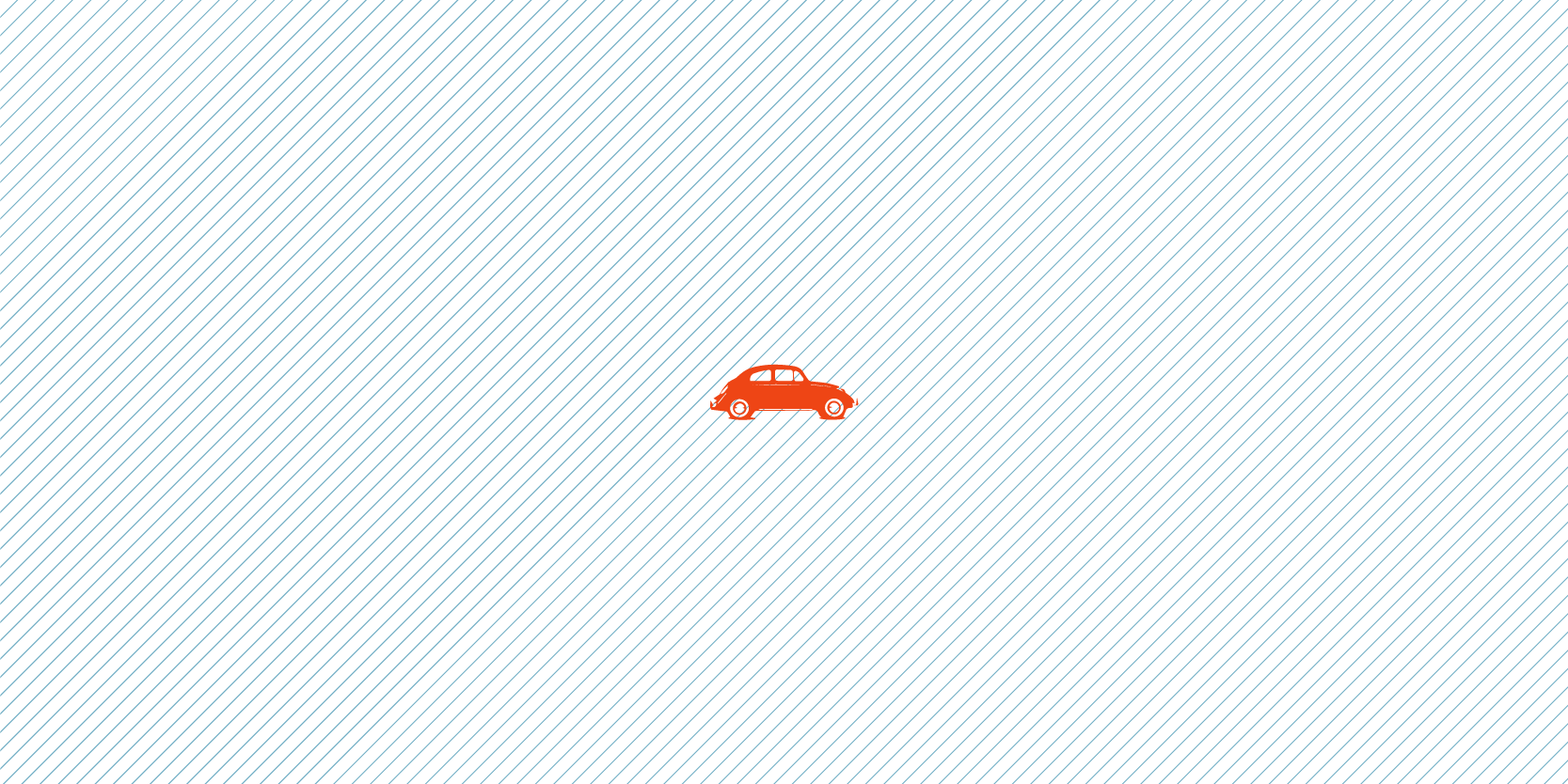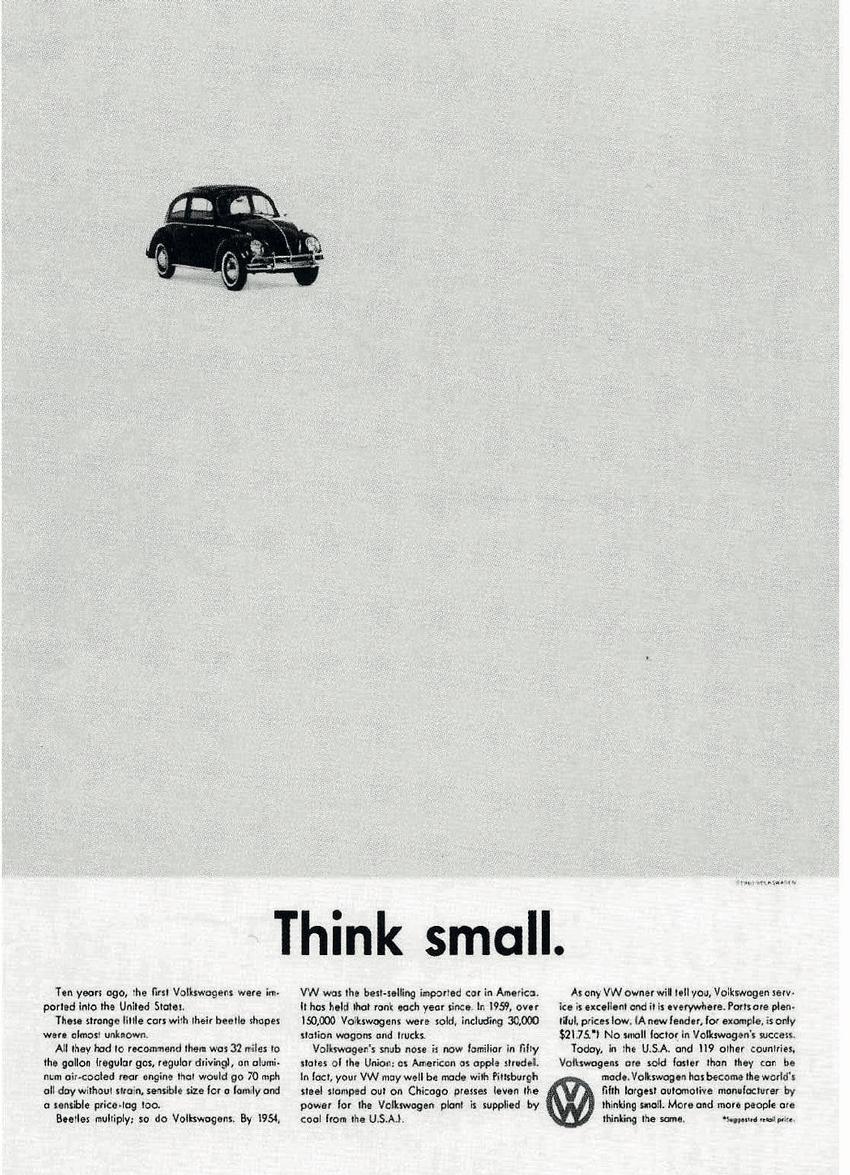CoronaScale
Part 5: CoronaScale

In scale, relationships matter. So does size, although bigger is not always better.
Scale is one of the fundamental tools a designer has to tell a visual story. It refers to the relative size of objects on a page whose physical relationship to one another indicates their importance,
instructing viewers which elements to view, in what order to view them, and what’s most important to focus on.
 As a student of design as well as a professional, one of my earliest lessons in the power of scale was the famous 1960’s Volkswagen ad with the headline “Think Small.” The car ads of that time were uniformly big, bold and bombastic, in an effort to dominate. Volkswagen took an opposite, understated and subversive approach in their advertising, scaling down their plain “people’s car” and placing it on a vast field of white above the words “Think Small,” communicating to the world that the time had come to “Think Different,” like Apple did 30 years later.”
As a student of design as well as a professional, one of my earliest lessons in the power of scale was the famous 1960’s Volkswagen ad with the headline “Think Small.” The car ads of that time were uniformly big, bold and bombastic, in an effort to dominate. Volkswagen took an opposite, understated and subversive approach in their advertising, scaling down their plain “people’s car” and placing it on a vast field of white above the words “Think Small,” communicating to the world that the time had come to “Think Different,” like Apple did 30 years later.”
To see the diminutive Dr. Fauci—day-after-day, lowering the microphone after the commander in chief’s lengthy pontifications—speak his steady, measured truth, has been as strong an example of the power of scale as the “Think Small” campaign and of far greater consequence. While the president, blanketed by media, boldly broadcasted ad nauseum about his accomplishments, Dr. Fauci, head barely above the podium, introduced the practical innovations that would guide public health policy, save lives and profoundly influence world culture, i.e., social distancing, the wearing of masks and hand washing.
In scale, relationships matter. So does size, although bigger is not always better. We’ve seen how scale can be transformative, as Dr. Fauci demonstrates. My hope is that we can now scale the transformed behaviors and steady improvements in our pandemic response into national and global best practices.
Conclusion
Nobody knows how the pandemic will end or how it will permanently alter our lives. All we can control is our own behavior. And my 35-year experience in the design field suggests that when we have a solid design brief and a team that aligns to the tasks at hand, putting larger interests before individual ones, we can scale to the challenge. In the meantime, keep on kerning.


